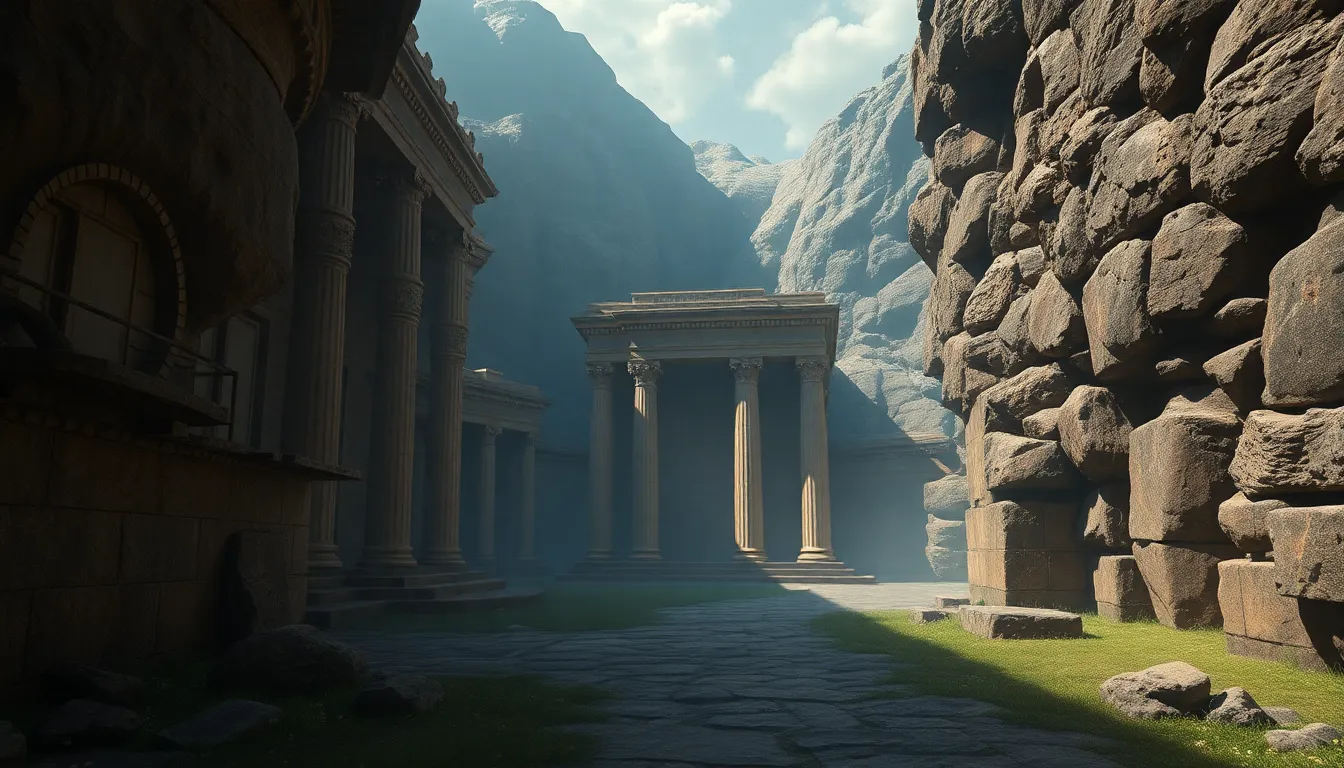The Mythical Echo: Sacred Places That Resonate with History
I. Introduction to Sacred Places
Sacred places are locations imbued with spiritual significance, often associated with religious practices, historical events, or cultural narratives. These sites serve as a bridge between the physical world and the spiritual realm, providing a sense of connection for individuals and communities alike.
The importance of historical resonance in sacred places lies in their ability to tell stories of the past, embodying the beliefs and traditions of those who have come before us. They evoke a sense of wonder and reverence, inviting visitors to explore the rich tapestry of human experience.
This article aims to explore the various dimensions of sacred places, examining their mythical echoes, historical significance, and the challenges they face in the modern world.
II. The Concept of Mythical Echoes
The term “mythical echoes” refers to the enduring stories and legends that resonate through time, often tied to specific locations. These echoes are not just remnants of the past; they continue to shape contemporary understanding and cultural identity.
Historically, mythical echoes have played a significant role in shaping cultural narratives. They serve as vehicles for moral lessons, communal values, and historical context. For instance:
- The story of the Trojan War is intricately linked to the ruins of ancient Troy.
- The legends surrounding King Arthur are deeply associated with the landscape of Britain, particularly Glastonbury.
III. Ancient Civilizations and Their Sacred Sites
Sacred places were central to the cultural and spiritual lives of ancient civilizations. They acted as centers of worship, community gathering, and historical memory. Two notable examples include:
- Stonehenge – Believed to function as a celestial calendar, Stonehenge is a prehistoric monument in England that reflects the astronomical knowledge and ritual practices of its builders.
- Machu Picchu – This Incan citadel in Peru exemplifies the intersection of spirituality and architecture, serving as a sacred space that aligns with celestial bodies and embodies Incan cosmology.
These sites not only preserve history but also allow us to engage with the spiritual and cultural legacies of ancient peoples.
IV. Sacred Natural Landscapes
Mountains, rivers, and forests often hold sacred significance in various cultures. They are revered as the abodes of deities, spirits, or ancestors. Indigenous beliefs surrounding natural sites illustrate this connection:
- Uluru (Ayers Rock) – This massive sandstone monolith in Australia is sacred to the Anangu people, representing their cultural identity and spiritual beliefs.
- The Amazon Rainforest – Considered a living entity by many Indigenous groups, the Amazon is viewed as a source of life and spirituality, intertwining ecological and cultural narratives.
V. Religious Pilgrimage Sites
Pilgrimage is a practice found in many religions, where individuals journey to sacred sites for spiritual fulfillment, reflection, and community bonding. Notable pilgrimage sites include:
- Mecca – The Hajj, the pilgrimage to Mecca, is one of the Five Pillars of Islam, drawing millions of Muslims worldwide to the holy city.
- Santiago de Compostela – The Camino de Santiago, a network of pilgrimage routes leading to the shrine of the apostle Saint James, is steeped in history and spirituality.
VI. The Role of Architecture in Sacred Spaces
Architecture plays a crucial role in reflecting the spiritual beliefs and cultural values of a society. Sacred spaces often showcase remarkable engineering and artistry. Examples of significant architectural sites include:
- The Parthenon – A temple dedicated to Athena, this iconic structure in Athens exemplifies ancient Greek architectural mastery and religious devotion.
- The Great Mosque of Samarra – An engineering marvel, this mosque features a distinctive minaret and reflects the grandeur of Islamic architecture.
VII. The Impact of Sacred Places on Modern Society
Today, sacred sites attract millions of visitors, contributing to tourism and cultural heritage. They serve as centers for community and spirituality, fostering connections among people. However, this popularity raises important questions:
- How can we balance tourism and the preservation of sacredness?
- What are the impacts of commercialization on the sanctity of these places?
VIII. The Intersection of Myth and History
Myths often shape our understanding of history, providing context and meaning to events and places. Case studies illustrating this intersection include:
- The legend of King Arthur – Associated with Glastonbury, this myth has influenced perceptions of British history and culture.
- The myths of the Greek gods – Tied to Mount Olympus, these stories have shaped ancient Greek religion and continue to influence modern narratives.
IX. Challenges Facing Sacred Places Today
Despite their importance, sacred places face numerous challenges:
- Environmental threats – Climate change and pollution pose serious risks to the integrity of natural sacred sites.
- Cultural appropriation – The commercialization of sacred traditions can undermine their significance and disrespect their origins.
- Globalization – As cultures converge, the unique characteristics that define sacred places may be diluted or lost.
X. Conclusion: The Enduring Legacy of Sacred Places
The preservation of sacred places is crucial for maintaining our cultural heritage and spiritual connections. These sites serve as reminders of our shared humanity and the diverse narratives that shape our world.
Education and awareness play vital roles in fostering respect for these spaces, encouraging responsible visitation and stewardship. As we reflect on the importance of these sacred sites, let us commit to their preservation for future generations.
In conclusion, sacred places resonate with history, embodying the mythical echoes of our past and offering a glimpse into the spiritual dimensions of human experience. It is our duty to honor, protect, and learn from these invaluable treasures.




